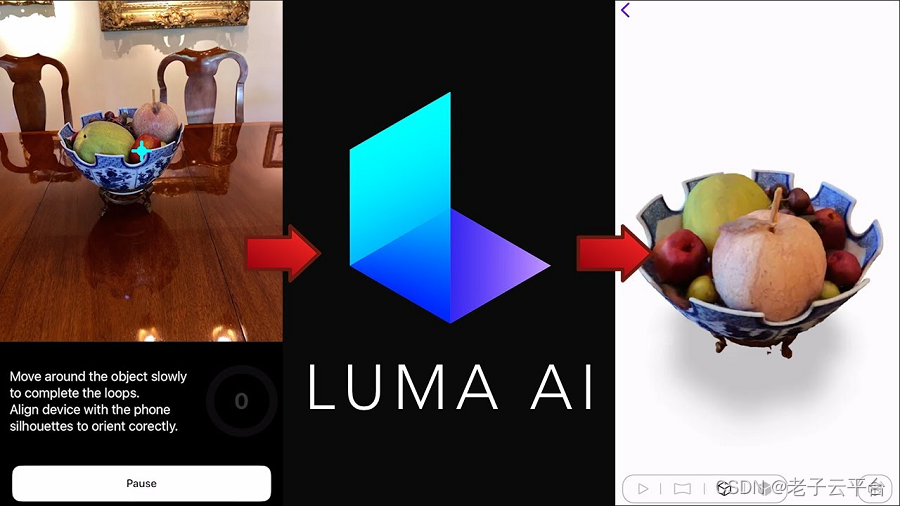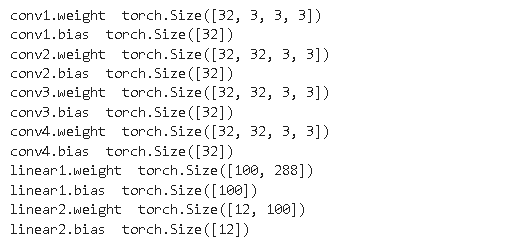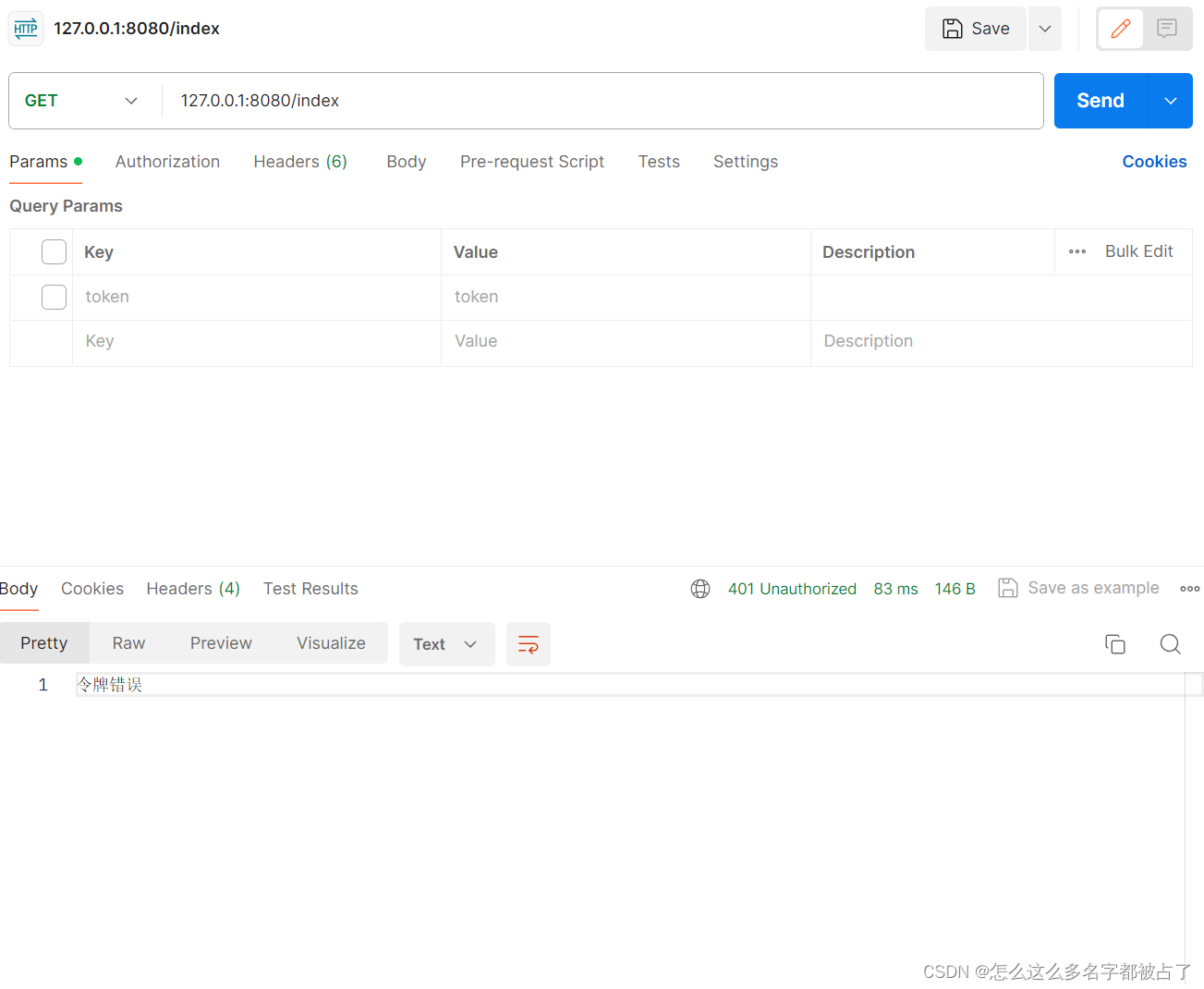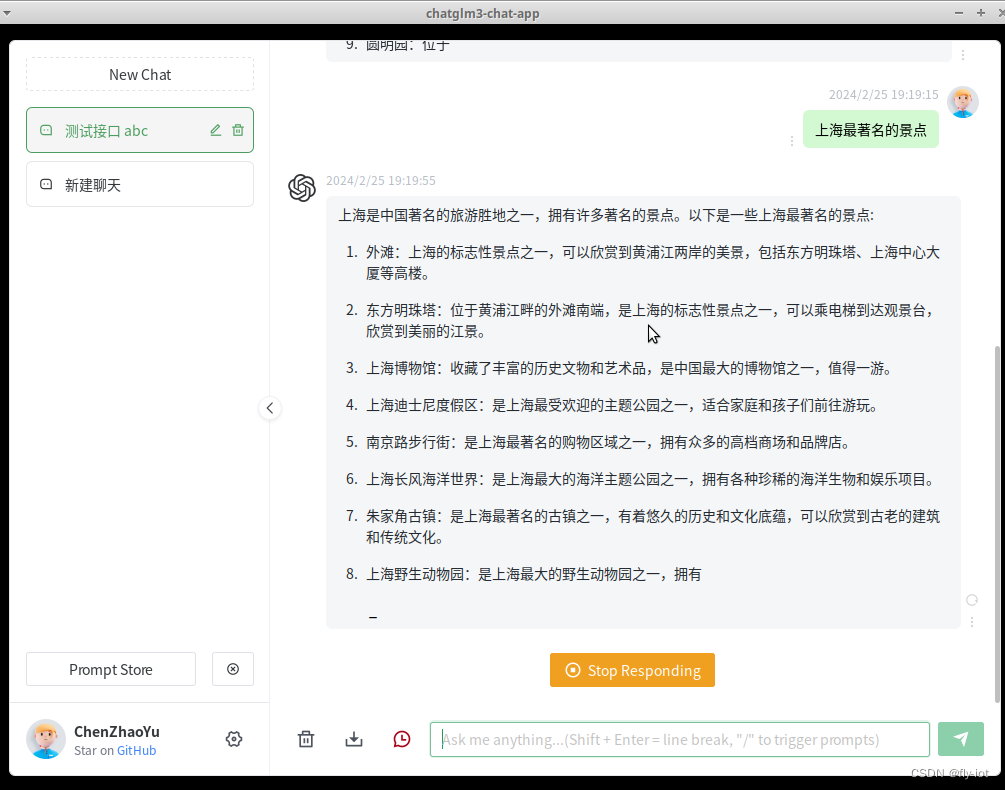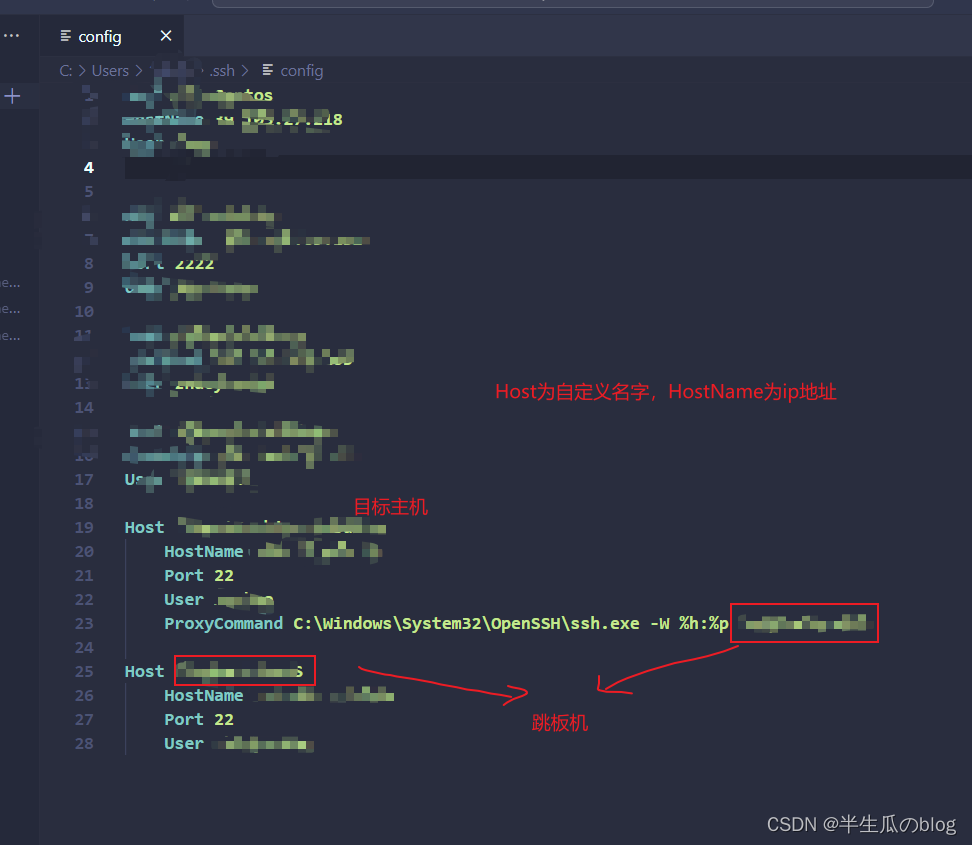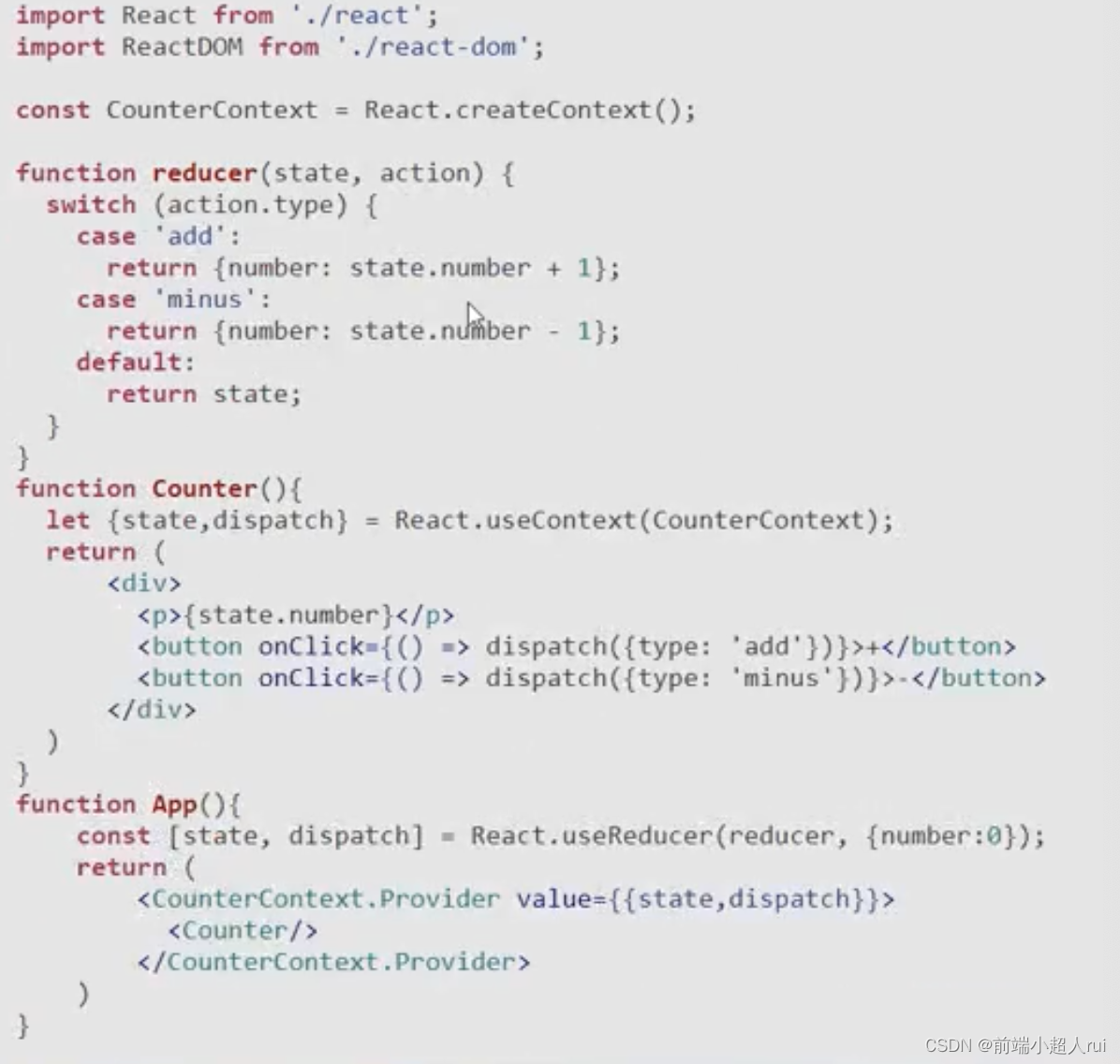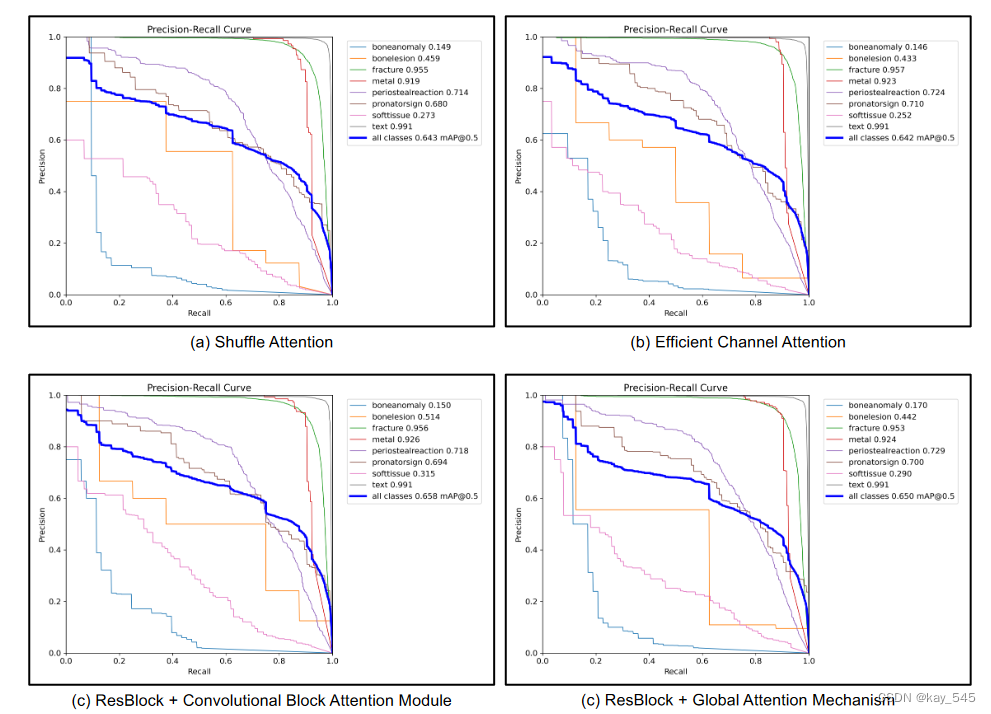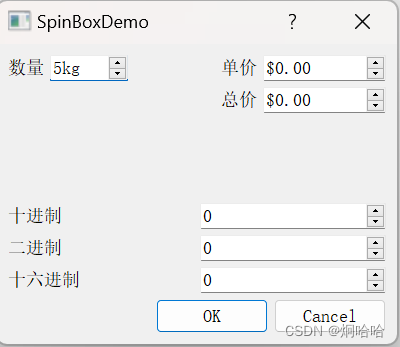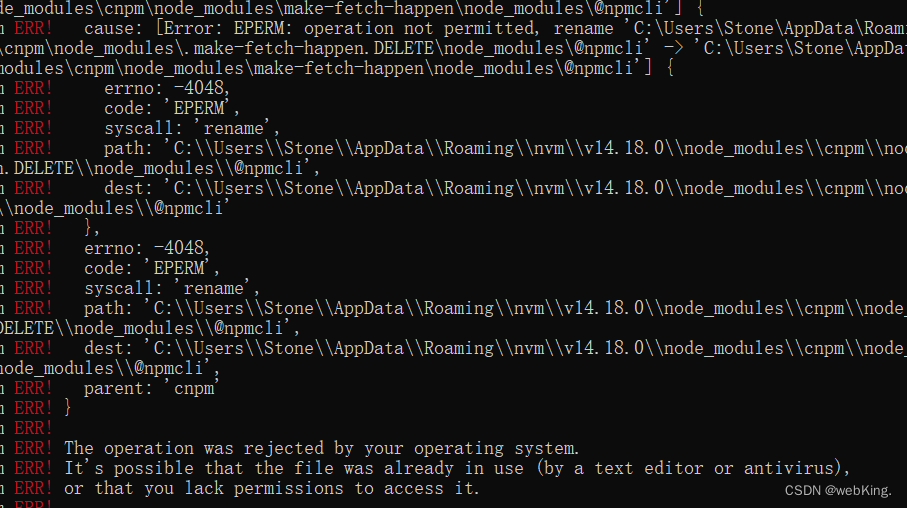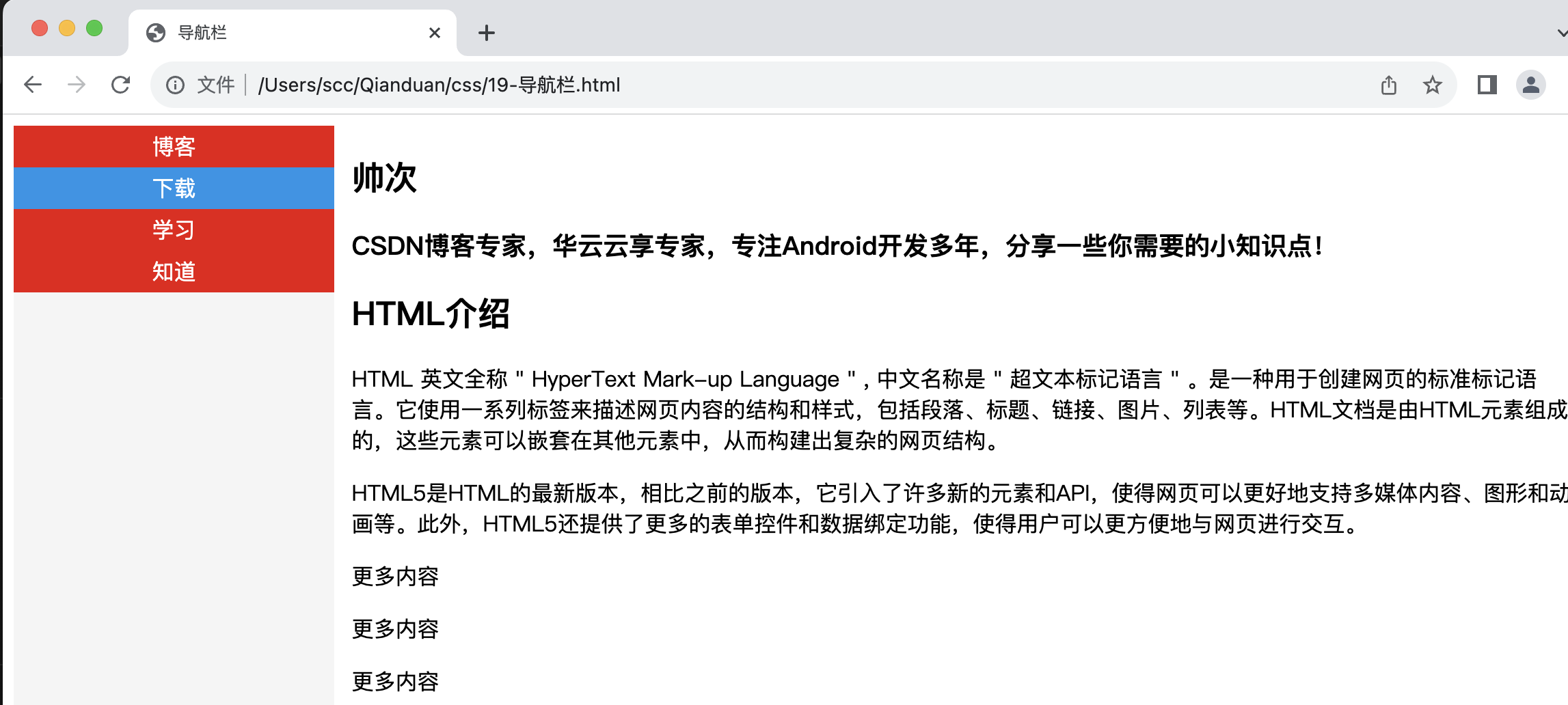在springboot环境下连接redis的方法有很多,首先最简单的就是直接通过jedis类来连接,jedis类就相当于是redis的客户端表示。
但是因为现在比较常用的是:StringRedisTemplate和RedisTemplate,所以jedis只做简单的介绍。
一、Jedis连接方式
1) Jedis直接链接Redis服务器
第一步:先引入Jedis的依赖:
<dependency>
<groupId>redis.clients</groupId>
<artifactId>jedis</artifactId>
<version>3.2.0</version>
</dependency>第二步 直接连接:
public static void main(String[] args) {
//连接本地的 Redis 服务
Jedis jedis = new Jedis("localhost",6379);
// 如果 Redis 服务设置了密码,需要用下面这行代码输入密码
jedis.auth("123456");
System.out.println("连接成功");
//查看服务是否运行
System.out.println("服务正在运行: "+jedis.ping());
}
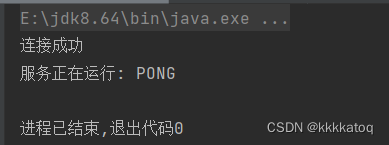
显示已经连接成功!
2)通过连接池的方式获取 Jedis
第一步仍然是引入依赖。
第二步代码实现:
public static void main(String[] args) {
// 创建Jedis连接池配置对象
JedisPoolConfig config = new JedisPoolConfig();
// 最大连接数
config.setMaxTotal(30);
// 最大空闲连接数
config.setMaxIdle(10);
// 最小空闲连接数
config.setMinIdle(5);
// 最长等待毫秒数
config.setMaxWaitMillis(3000);
// 连接到 redis 服务器上
JedisPool jedisPool = new JedisPool(new JedisPoolConfig(),
"localhost", 6379, 10000, "123456");
for (int i = 1; i <=31; i++) {
Jedis jedis = jedisPool.getResource();
System.out.println(jedis);
// jedis.close(); // 将连接归还到连接池
}
jedisPool.close(); // 释放资源
}需要先创建JedisPoolConfig 连接池配置对象来进行配置,然后再使用JedisPool 进行连接。
3)使用工厂模式连接Redis
一般我们不会这个频繁的创建Redis连接,正常情况下会使用工厂模式进行创建,这样会方便很多。
1)首先创建配置文件,将Jedis的各种配置信息,全都放到配置文件中设置
redis:
host: localhost
port: 6379
database: 1
#连接超时时间
timeout: 10
password: 123456
#最大连接数
poolMaxTotal=: 10
#最大空闲连接数
poolMaxIdle: 5
#最大等待连接数
poolMaxWait: 32)创建配置类:
@Component
@ConfigurationProperties(prefix = "redis")
@Data
public class RedisConfig {
private String host;
private int port;
private int timeout;//秒
private String password;
private int poolMaxTotal;
private int poolMaxIdle;
private int poolMaxWait;//秒
private int database;
}@Configuration
public class JedisPoolFactory {
@Autowired
RedisConfig redisConfig;
@Bean
public JedisPool JedisPoolFactory(){
System.out.println(redisConfig.toString());
JedisPoolConfig poolConfig=new JedisPoolConfig();
poolConfig.setMaxIdle(redisConfig.getPoolMaxIdle());
poolConfig.setMaxTotal(redisConfig.getPoolMaxTotal());
poolConfig.setMaxWaitMillis(redisConfig.getPoolMaxWait()*1000);
JedisPool jp=new JedisPool(poolConfig,redisConfig.getHost(),redisConfig.getPort()
,redisConfig.getTimeout()*1000,redisConfig.getPassword(),redisConfig.getDatabase());
return jp;
}
}3)像上面创建完配置类之后就可以直接使用Jedis了,示例如下:
@RestController
@RequestMapping("/redis")
public class RedisController {
@Autowired
JedisPool jedisPool;
@GetMapping("/demo")
public void name(@RequestParam("name") String name){
Jedis jedis = jedisPool.getResource();
jedis.set("name", name);
jedis.close();
}
}这是最简单的使用示例。
4) 哨兵模式连接Redis
1.首先还是要创建配置文件跟配置类,只不过属性要稍微改一下
redis:
sentinelHost: localhost1:26379,localhost2:localhost:26379
masterName: mymaster
# host: host
# port: 6379
database: 1
#连接超时时间
timeout: 30
password: 123456
#最大连接数
poolMaxTotal=: 10
#最大空闲连接数
poolMaxIdle: 5
#最大等待连接数
poolMaxWait: 3配置类:
@Component
@ConfigurationProperties(prefix = "redis")
@Data
public class RedisConfig {
private String sentinelHost;
private String masterName;
// private int port;
private int timeout;//秒
private String password;
private int poolMaxTotal;
private int poolMaxIdle;
private int poolMaxWait;//秒
private int database;
}2.创建连接池:
@Configuration
public class JedisPoolFactory {
@Autowired
RedisConfig redisConfig;
@Bean
public JedisSentinelPool JedisPoolFactory(){
System.out.println(redisConfig.toString());
JedisPoolConfig poolConfig=new JedisPoolConfig();
poolConfig.setMaxIdle(redisConfig.getPoolMaxIdle());
poolConfig.setMaxTotal(redisConfig.getPoolMaxTotal());
poolConfig.setMaxWaitMillis(redisConfig.getPoolMaxWait()*1000);
// 哨兵信息,注意填写哨兵的地址
String[] host = redisConfig.getSentinelHost().split(",");
Set<String> sentinels = new HashSet<>(Arrays.asList(host));
// 创建连接池
JedisSentinelPool jp = new JedisSentinelPool(redisConfig.getMasterName(),
sentinels,poolConfig,2000, redisConfig.getPassword(),redisConfig.getDatabase());
return jp;
}
}4) 集群模式连接:
都差不多,只简单说一下如何创建连接池:
public static void testCluster() {
// 配置参数,根据服务器情况设置连接参数
JedisPoolConfig config = new JedisPoolConfig();
config.setMaxIdle(100);
// 添加集群master地址
Set<HostAndPort> jedisClusterSet = new HashSet<>();
jedisClusterSet.add(new HostAndPort("192.168.242.128", 8201));
jedisClusterSet.add(new HostAndPort("192.168.242.128", 8202));
jedisClusterSet.add(new HostAndPort("192.168.242.128", 8203));
// 连接集群
JedisCluster jedisCluster = new JedisCluster(jedisClusterSet, config);
// r如果带密码
//JedisCluster jedisCluster = new JedisCluster(jedisClusterSet,1000, 1000, 5, password, config);
// 设置key
jedisCluster.set("okayjam", "www.okayjam.com");
// 读取key
System.out.println(jedisCluster.get("okayjam"));
}二、Jedis的操作:
1)Jedis对key的操作
jedis.flushDB();// 清空数据
jedis.echo("hello");
// 判断key否存在
jedis.exists("foo");
// 如果数据库没有任何key,返回nil,否则返回数据库中一个随机的key。
String randomKey = jedis.randomKey();
System.out.println("randomKey: " + randomKey);
// 设置60秒后该key过期
jedis.expire("key", 60);
// key有效毫秒数
System.out.println(jedis.pttl("key"));
// 移除key的过期时间
jedis.persist("key");
// 获取key的类型, "string", "list", "set". "none" none表示key不存在
System.out.println("type: " + jedis.type("key"));
// 导出key的值
byte[] bytes = jedis.dump("key");
System.out.println(new String(bytes));
// 将key重命名
jedis.renamenx("key", "keytest");
System.out.println("key是否存在: " + jedis.exists("key"));// 判断是否存在
System.out.println("keytest是否存在: " + jedis.exists("keytest"));// 判断是否存在
// 查询匹配的key
// KEYS * 匹配数据库中所有 key 。
// KEYS h?llo 匹配 hello , hallo 和 hxllo 等。
// KEYS h*llo 匹配 hllo 和 heeeeello 等。
// KEYS h[ae]llo 匹配 hello 和 hallo ,但不匹配 hillo 。
// 特殊符号用 \ 隔开。
Set<String> set = jedis.keys("k*");
System.out.println(set);
// 删除key
jedis.del("key");
System.out.println(jedis.exists("key"));2) Jedis对字符串(String)的相关操作
jedis.set("hello", "hello");
// 使用append 向字符串后面添加
jedis.append("hello", " world");
System.out.println(jedis.get("hello"));
// set覆盖字符串
jedis.set("hello", "123");
System.out.println(jedis.get("hello"));
// 设置过期时间
jedis.setex("hello2", 2, "world2");
System.out.println(jedis.get("hello2"));
// 一次添加多个key-value对
jedis.mset("a", "1", "b", "2");
// 获取a和b的value
List<String> valus = jedis.mget("a", "b");
System.out.println(valus);
// 批量删除
jedis.del("a", "b");
System.out.println(jedis.exists("a"));
System.out.println(jedis.exists("b"));
3)Jedis对链表(Lists)的操作
String key = "mylist";
jedis.del(key);
// 队列添加元素
jedis.rpush(key, "aaaa");
jedis.rpush(key, "aaaa");
jedis.rpush(key, "bbbb");
jedis.rpush(key, "cccc");
jedis.rpush(key, "cccc");
// 队列长度
System.out.println("lenth: " + jedis.llen(key));
// 打印队列,从索引0开始,到倒数第1个(全部元素)
System.out.println("all elements: " + jedis.lrange(key, 0, -1));
// 索引为1的元素
System.out.println("index of 1: " + jedis.lindex(key, 1));
// 设置队列里面一个元素的值,当index超出范围时会返回一个error。
jedis.lset(key, 1, "aa22");
System.out.println("index of 1: " + jedis.lindex(key, 1));
// 从队列的右边入队一个元素
jedis.rpush(key, "-2", "-1");// 先-2,后-1入队列
System.out.println("all elements: " + jedis.lrange(key, 0, -1));
// 从队列的左边入队一个或多个元素
jedis.lpush(key, "second element", "first element");// 先second
// element,后first
// elementF入队列
System.out.println("all elements: " + jedis.lrange(key, 0, -1));
// 从队列的右边出队一个元素
System.out.println(jedis.rpop(key));
// 从队列的左边出队一个元素
System.out.println(jedis.lpop(key));
System.out.println("all elements: " + jedis.lrange(key, 0, -1));
// count > 0: 从头往尾移除值为 value 的元素,count为移除的个数。
// count < 0: 从尾往头移除值为 value 的元素,count为移除的个数。
// count = 0: 移除所有值为 value 的元素。
jedis.lrem(key, 1, "cccc");
System.out.println("all elements: " + jedis.lrange(key, 0, -1));
// 即最右边的那个元素也会被包含在内。 如果start比list的尾部下标大的时候,会返回一个空列表。
// 如果stop比list的实际尾部大的时候,Redis会当它是最后一个元素的下标。
System.out.println(jedis.lrange(key, 0, 2));
System.out.println("all elements: " + jedis.lrange(key, 0, -1));
// 删除区间以外的元素
System.out.println(jedis.ltrim(key, 0, 2));
System.out.println("all elements: " + jedis.lrange(key, 0, -1));4)Jedis对集合(Sets)的操作
// 清空数据
System.out.println(jedis.flushDB());
String key = "myset";
String key2 = "myset2";
// 集合添加元素
jedis.sadd(key, "aaa", "bbb", "ccc");
jedis.sadd(key2, "bbb", "ccc", "ddd");
// 获取集合里面的元素数量
System.out.println(jedis.scard(key));
// 获得两个集合的交集,并存储在一个关键的结果集
jedis.sinterstore("destination", key, key2);
System.out.println(jedis.smembers("destination"));
// 获得两个集合的并集,并存储在一个关键的结果集
jedis.sunionstore("destination", key, key2);
System.out.println(jedis.smembers("destination"));
// key集合中,key2集合没有的元素,并存储在一个关键的结果集
jedis.sdiffstore("destination", key, key2);
System.out.println(jedis.smembers("destination"));
// 确定某个元素是一个集合的成员
System.out.println(jedis.sismember(key, "aaa"));
// 从key集合里面随机获取一个元素
System.out.println(jedis.srandmember(key));
// aaa从key移动到key2集合
jedis.smove(key, key2, "aaa");
System.out.println(jedis.smembers(key));
System.out.println(jedis.smembers(key2));
// 删除并获取一个集合里面的元素
System.out.println(jedis.spop(key));
// 从集合里删除一个或多个元素
jedis.srem(key2, "ccc", "ddd");
System.out.println(jedis.smembers(key2));5)Jedis对有序集合(Sorted Sets)的操作
// 清空数据
System.out.println(jedis.flushDB());
String key = "mysortset";
Map<String, Double> scoreMembers = new HashMap<String, Double>();
scoreMembers.put("aaa", 1001.0);
scoreMembers.put("bbb", 1002.0);
scoreMembers.put("ccc", 1003.0);
// 添加数据
jedis.zadd(key, 1004.0, "ddd");
jedis.zadd(key, scoreMembers);
// 获取一个排序的集合中的成员数量
System.out.println(jedis.zcard(key));
// 返回的成员在指定范围内的有序集合,以0表示有序集第一个成员,以1表示有序集第二个成员,以此类推。
// 负数下标,以-1表示最后一个成员,-2表示倒数第二个成员
Set<String> coll = jedis.zrange(key, 0, -1);
System.out.println(coll);
// 返回的成员在指定范围内的逆序集合
coll = jedis.zrevrange(key, 0, -1);
System.out.println(coll);
// 元素下标
System.out.println(jedis.zscore(key, "bbb"));
// 删除元素
System.out.println(jedis.zrem(key, "aaa"));
System.out.println(jedis.zrange(key, 0, -1));
// 给定值范围内的成员数
System.out.println(jedis.zcount(key, 1002.0, 1003.0));
6)Jedis对哈希(Hashs)的操作
// 清空数据
System.out.println(jedis.flushDB());
String key = "myhash";
Map<String, String> hash = new HashMap<String, String>();
hash.put("aaa", "11");
hash.put("bbb", "22");
hash.put("ccc", "33");
// 添加数据
jedis.hmset(key, hash);
jedis.hset(key, "ddd", "44");
// 获取hash的所有元素(key值)
System.out.println(jedis.hkeys(key));
// 获取hash中所有的key对应的value值
System.out.println(jedis.hvals(key));
// 获取hash里所有元素的数量
System.out.println(jedis.hlen(key));
// 获取hash中全部的域和值,以Map<String, String> 的形式返回
Map<String, String> elements = jedis.hgetAll(key);
System.out.println(elements);
// 判断给定key值是否存在于哈希集中
System.out.println(jedis.hexists(key, "bbb"));
// 获取hash里面指定字段对应的值
System.out.println(jedis.hmget(key, "aaa", "bbb"));
// 获取指定的值
System.out.println(jedis.hget(key, "aaa"));
// 删除指定的值
System.out.println(jedis.hdel(key, "aaa"));
System.out.println(jedis.hgetAll(key));
// 为key中的域 field 的值加上增量 increment
System.out.println(jedis.hincrBy(key, "bbb", 100));
System.out.println(jedis.hgetAll(key));三、Jedis操作封装类
一般不直接从Jedis连接池中获取实例然后进行操作,一般会写好一个封装类,然后使用封装类进行操作,简单提供几个示例:
1) 示例一
例如平时常用的redis操作的get、set、exists、incr、decr方法,序列化的beanToString和stringToBean方法,用到的是import com.alibaba.fastjson.JSON;
@Service
public class RedisService {
@Autowired
JedisPool jedisPool;
/**
* 获取单个对象
* @param prefix
* @param key
* @param clazz
* @param <T>
* @return
*/
public <T> T get(KeyPrefix prefix,String key,Class<T> clazz){
Jedis jedis =null;
try {
jedis = jedisPool.getResource();
//生成真正的key
String realKey =prefix.getPrefix()+key;
String str = jedis.get(realKey);
T t=stringToBean(str,clazz);
return t;
}finally {
returnToPool(jedis);
}
}
/**
* 设置对象
* @param prefix
* @param key
* @param value
* @param <T>
* @return
*/
public <T> boolean set(KeyPrefix prefix,String key,T value){
Jedis jedis =null;
try {
jedis = jedisPool.getResource();
String str=beanToString(value);
if (str==null||str.length()<=0)
return false;
//生成真正的key
String realKey =prefix.getPrefix()+key;
int seconds=prefix.expireSeconds();
if (seconds<=0){
jedis.set(realKey,str);
} else {
jedis.setex(realKey,seconds,str);
}
jedis.set(realKey, str);
return true;
}finally {
returnToPool(jedis);
}
}
/**
* 判断是否存在
* @param prefix
* @param key
* @param <T>
* @return
*/
public <T> boolean exists(KeyPrefix prefix,String key){
Jedis jedis =null;
try {
jedis = jedisPool.getResource();
//生成真正的key
String realKey =prefix.getPrefix()+key;
return jedis.exists(realKey);
}finally {
returnToPool(jedis);
}
}
/**
* 增加值
* @param prefix
* @param key
* @param <T>
* @return
*/
public <T> Long incr(KeyPrefix prefix,String key){
Jedis jedis =null;
try {
jedis = jedisPool.getResource();
//生成真正的key
String realKey =prefix.getPrefix()+key;
return jedis.incr(realKey);
}finally {
returnToPool(jedis);
}
}
/**
* 减少值
* @param prefix
* @param key
* @param <T>
* @return
*/
public <T> Long decr(KeyPrefix prefix,String key){
Jedis jedis =null;
try {
jedis = jedisPool.getResource();
//生成真正的key
String realKey =prefix.getPrefix()+key;
return jedis.decr(realKey);
}finally {
returnToPool(jedis);
}
}
private <T> String beanToString(T value) {
if (value==null)
return null;
Class<?> aClass = value.getClass();
if (aClass==int.class||aClass==Integer.class){
return ""+value;
}else if (aClass==String.class){
return (String) value;
}else if (aClass==long.class||aClass==Long.class){
return ""+value;
}else {
return JSON.toJSONString(value);
}
}
private <T> T stringToBean(String str,Class<T> aClass) {
if (str==null||str.length()<=0||aClass==null)
return null;
if (aClass==int.class||aClass==Integer.class){
return (T)Integer.valueOf(str);
}else if (aClass==String.class){
return (T)str;
}else if (aClass==long.class||aClass==Long.class){
return (T)Long.valueOf(str);
}else {
return JSON.toJavaObject(JSON.parseObject(str),aClass);
}
}
private void returnToPool(Jedis jedis) {
if (jedis!=null){
jedis.close();
}
}
}
2) 示例二:
/**
* 基于jedis的redis操作工具类
* @author jyf
* @time 2019/8/3 22:30
*/
public final class RedisUtils {
/*
除了该工具类提供的方法外,还可以在外面调用getJedis()方法,获取到jedis实例后,调用它原生的api来操作
*/
/**
* 获取jedis对象,并选择redis库。jedis默认是0号库,可传入1-16之间的数选择库存放数据
* 原则上使用一个redis库存放数据,通过特定的key的命令规则来区分不同的数据就行了。
*
* @param index redis库号。使用可变参数的目的就是该参数可传可不传。
* @return 返回jedis对象
*/
public static Jedis getJedis(int... index) {
Jedis jedis = MyJedisPoolConfig.getJedisPool().getResource();
if (index != null && index.length > 0) {
if (index[0] > 0 && index[0] <= 16){
jedis.select(index[0]);
}
}
return jedis;
}
/*######################## key的操作 ################################*/
/**
* 根据pattern返回当前库中的key
*
* @param pattern
* @return
*/
public static Set<String> keys(String pattern) {
Jedis jedis = null;
Set<String> keys = null;
try {
jedis = getJedis();
keys = jedis.keys(pattern);
}finally {
if (jedis != null){
jedis.close();
}
}
return keys;
}
/**
* 删除一个或多个key
*
* @param key 一个或多个key
*/
public static Long del(String... key) {
Jedis jedis = null;
Long delNum = 0L;
try {
jedis = getJedis();
delNum =jedis.del(key);
}finally {
if (jedis != null){
jedis.close();
}
}
return delNum;
}
/**
* 批量删除
* @param keyList 要删除的key的集合
*/
public static void mdel(List<String> keyList){
Jedis jedis = getJedis();
//获取pipeline
Pipeline pipeline = jedis.pipelined();
for (String key : keyList) {
pipeline.del(key);
}
//执行结果同步,这样才能保证结果的正确性。实际上不执行该方法也执行了上面的命令,但是结果确不一定完全正确。
//注意
pipeline.sync();
//关闭连接
jedis.close();
}
/**
* 判断某个key是否还存在
*
* @param key key
* @return
*/
public static Boolean exists(String key) {
Jedis jedis = null;
Boolean flag = false;
try {
jedis = getJedis();
flag = jedis.exists(key);
}finally {
if (jedis != null){
jedis.close();
}
}
return flag;
}
/**
* 设置某个key的过期时间,单位秒
*
* @param key key
* @param seconds 过期时间秒
*/
public static void expire(String key, int seconds) {
Jedis jedis = null;
try {
jedis = getJedis();
jedis.expire(key, seconds);
}finally {
if (jedis != null){
jedis.close();
}
}
}
/**
* 查看某个key还有几秒过期,-1表示永不过期 ,-2表示已过期
*
* @param key key
* @return
*/
public static Long timeToLive(String key) {
Jedis jedis = null;
Long ttl;
try {
jedis = getJedis();
ttl = jedis.ttl(key);
}finally {
if (jedis != null){
jedis.close();
}
}
return ttl;
}
/**
* 查看某个key对应的value的类型
*
* @param key
* @return
*/
public static String type(String key) {
Jedis jedis = null;
String type = null;
try {
jedis = getJedis();
type = jedis.type(key);
}finally {
if (jedis != null){
jedis.close();
}
}
return type;
}
/*######################## string(字符串)的操作 ####################*/
/**
* 获取某个key的value,类型要对,只能value是string的才能获取
*
* @param key
* @return
*/
public static String get(String key) {
Jedis jedis = null;
String value = null;
try {
jedis = getJedis();
value = jedis.get(key);
}finally {
if (jedis != null){
jedis.close();
}
}
return value;
}
/**
* 设置某个key的value
*
* @param key
* @param value
*/
public static void set(String key, String value) {
Jedis jedis = null;
try {
jedis = getJedis();
jedis.set(key, value);
}finally {
if (jedis != null){
jedis.close();
}
}
}
/**
* 字符串后追加内容
*
* @param key key
* @param appendContent 要追加的内容
*/
public static void append(String key, String appendContent) {
Jedis jedis = null;
try {
jedis = getJedis();
jedis.append(key, appendContent);
}finally {
if (jedis != null){
jedis.close();
}
}
}
/**
* 返回key的value的长度
*
* @param key
* @return
*/
public static Long strlen(String key) {
Jedis jedis = null;
Long strLen = 0L;
try {
jedis = getJedis();
strLen = jedis.strlen(key);
}finally {
if (jedis != null){
jedis.close();
}
}
return strLen;
}
/**
* value 加1 必
* 须是字符型数字
* @param key
* @return 增加后的值
*/
public static Long incr(String key) {
Jedis jedis = null;
Long incrResult = 0L;
try {
jedis = getJedis();
incrResult = jedis.incr(key);
}finally {
if (jedis != null){
jedis.close();
}
}
return incrResult;
}
/**
* value 减1 必须是字符型数字
*
* @param key
* @return
*/
public static Long decr(String key) {
Jedis jedis = null;
Long decrResult = 0L;
try {
jedis = getJedis();
decrResult = jedis.decr(key);
}finally {
if (jedis != null){
jedis.close();
}
}
return decrResult;
}
/**
* value 加increment
*
* @param key key
* @param increment 加几
* @return
*/
public static Long incrby(String key, int increment) {
Jedis jedis = null;
Long incrByResult = 0L;
try {
jedis = getJedis();
incrByResult = jedis.incrBy(key, increment);
}finally {
if (jedis != null){
jedis.close();
}
}
return incrByResult;
}
/**
* value 减increment
*
* @param key
* @param increment
* @return
*/
public static Long decrby(String key, int increment) {
Jedis jedis = null;
Long decrByResult = 0L;
try {
jedis = getJedis();
decrByResult = jedis.decrBy(key, increment);
}finally {
if (jedis != null){
jedis.close();
}
}
return decrByResult;
}
/**
* 给某个key设置过期时间和value,成功返回OK
*
* @param key key
* @param seconds 过期时间秒
* @param value 设置的值
* @return
*/
public static String setex(String key, int seconds, String value) {
Jedis jedis = null;
String result = null;
try {
jedis = getJedis();
result = jedis.setex(key, seconds, value);
}finally {
if (jedis != null){
jedis.close();
}
}
return result;
}
/*######################## list(列表)的操作 #######################*/
//lpush rpush lpop rpop lrange lindex llen lset
/**
* 从左边向列表中添加值
*
* @param key key
* @param str 要添加的值
*/
public static void lpush(String key, String str) {
Jedis jedis = null;
try {
jedis = getJedis();
jedis.lpush(key, str);
}finally {
if (jedis != null){
jedis.close();
}
}
}
/**
* 从右边向列表中添加值
*
* @param key key
* @param str 要添加的值
*/
public static void rpush(String key, String str) {
Jedis jedis = null;
try {
jedis = getJedis();
jedis.rpush(key, str);
}finally {
if (jedis != null){
jedis.close();
}
}
}
/**
* 从左边取出一个列表中的值
*
* @param key
* @return
*/
public static String lpop(String key) {
Jedis jedis = null;
String lpop = null;
try {
jedis = getJedis();
lpop = jedis.lpop(key);
}finally {
if (jedis != null){
jedis.close();
}
}
return lpop;
}
/**
* 从右边取出一个列表中的值
*
* @param key
* @return
*/
public static String rpop(String key) {
Jedis jedis = null;
String rpop = null;
try {
jedis = getJedis();
rpop = jedis.rpop(key);
}finally {
if (jedis != null){
jedis.close();
}
}
return rpop;
}
/**
* 取出列表中指定范围内的值,0 到 -1 表示全部
*
* @param key
* @param startIndex
* @param endIndex
* @return
*/
public static List<String> lrange(String key, int startIndex, int endIndex) {
Jedis jedis = null;
List<String> result = null;
try {
jedis = getJedis();
result = jedis.lrange(key, startIndex, endIndex);
}finally {
if (jedis != null){
jedis.close();
}
}
return result;
}
/**
* 返回某列表指定索引位置的值
*
* @param key 列表key
* @param index 索引位置
* @return
*/
public static String lindex(String key, int index) {
Jedis jedis = null;
String lindex = null;
try {
jedis = getJedis();
lindex = jedis.lindex(key, index);
}finally {
if (jedis != null){
jedis.close();
}
}
return lindex;
}
/**
* 返回某列表的长度
*
* @param key
* @return
*/
public static Long llen(String key) {
Jedis jedis = null;
Long llen = 0L;
try {
jedis = getJedis();
llen = jedis.llen(key);
}finally {
if (jedis != null){
jedis.close();
}
}
return llen;
}
/**
* 给某列表指定位置设置为指定的值
*
* @param key
* @param index
* @param str
*/
public static void lset(String key, Long index, String str) {
Jedis jedis = null;
try {
jedis = getJedis();
jedis.lset(key, index, str);
}finally {
if (jedis != null){
jedis.close();
}
}
}
/**
* 对列表进行剪裁,保留指定闭区间的元素(索引位置也会重排)
* @param key 列表key
* @param startIndex 开始索引位置
* @param endIndex 结束索引位置
*/
public static void ltrim(String key,Integer startIndex,Integer endIndex){
Jedis jedis = null;
try {
jedis = getJedis();
jedis.ltrim(key, startIndex, endIndex);
}finally {
if (jedis != null){
jedis.close();
}
}
}
/**
* 从列表的左边阻塞弹出一个元素
* @param key 列表的key
* @param timeout 阻塞超时时间,0表示若没有元素就永久阻塞
* @return
*/
public static List<String> blpop(String key,Integer timeout){
Jedis jedis = null;
List<String> valueList = null;
try {
jedis = getJedis();
valueList = jedis.blpop(timeout, key);
}finally {
if (jedis != null){
jedis.close();
}
}
return valueList;
}
/**
* 从列表的右边阻塞弹出一个元素
* @param key 列表的key
* @param timeout 阻塞超时时间,0表示若没有元素就永久阻塞
* @return
*/
public static List<String> brpop(String key,Integer timeout){
Jedis jedis = null;
List<String> valueList = null;
try {
jedis = getJedis();
valueList = jedis.brpop(timeout, key);
}finally {
if (jedis != null){
jedis.close();
}
}
return valueList;
}
/*######################## hash(哈希表)的操作 #######################*/
//hset hget hmset hmget hgetall hdel hkeys hvals hexists hincrby
/**
* 给某个hash表设置一个键值对
*
* @param key
* @param field
* @param value
*/
public static void hset(String key, String field, String value) {
Jedis jedis = null;
try {
jedis = getJedis();
jedis.hset(key, field, value);
}finally {
if (jedis != null){
jedis.close();
}
}
}
/**
* 取出某个hash表中某个field对应的value
*
* @param key key
* @param field field
* @return
*/
public static String hget(String key, String field) {
Jedis jedis = null;
String hget = null;
try {
jedis = getJedis();
hget = jedis.hget(key, field);
}finally {
if (jedis != null){
jedis.close();
}
}
return hget;
}
/**
* 某个hash表设置一个或多个键值对
*
* @param key
* @param kvMap
*/
public static void hmset(String key, Map<String, String> kvMap) {
Jedis jedis = null;
try {
jedis = getJedis();
jedis.hmset(key, kvMap);
}finally {
if (jedis != null){
jedis.close();
}
}
}
/**
* 取出某个hash表中任意多个key对应的value的集合
*
* @param key
* @param fields
* @return
*/
public static List<String> hmget(String key, String... fields) {
Jedis jedis = null;
List<String> hmget = null;
try {
jedis = getJedis();
hmget = jedis.hmget(key, fields);
}finally {
if (jedis != null){
jedis.close();
}
}
return hmget;
}
/**
* 取出某个hash表中所有的键值对
*
* @param key
* @return
*/
public static Map<String, String> hgetall(String key) {
Jedis jedis = null;
Map<String, String> kvMap = null;
try {
jedis = getJedis();
kvMap = jedis.hgetAll(key);
}finally {
if (jedis != null){
jedis.close();
}
}
return kvMap;
}
/**
* 判断某个hash表中的某个key是否存在
*
* @param key
* @param field
* @return
*/
public static Boolean hexists(String key, String field) {
Jedis jedis = null;
Boolean exists = null;
try {
jedis = getJedis();
exists = jedis.hexists(key, field);
}finally {
if (jedis != null){
jedis.close();
}
}
return exists;
}
/**
* 返回某个hash表中所有的key
*
* @param key
* @return
*/
public static Set<String> hkeys(String key) {
Jedis jedis = null;
Set<String> keys = null;
try {
jedis = getJedis();
keys = jedis.hkeys(key);
}finally {
if (jedis != null){
jedis.close();
}
}
return keys;
}
/**
* 返回某个hash表中所有的value
*
* @param key
* @return
*/
public static List<String> hvals(String key) {
Jedis jedis = null;
List<String> hvals = null;
try {
jedis = getJedis();
hvals = jedis.hvals(key);
}finally {
if (jedis != null){
jedis.close();
}
}
return hvals;
}
/**
* 删除某个hash表中的一个或多个键值对
*
* @param key
* @param fields
*/
public static void hdel(String key, String... fields) {
Jedis jedis = null;
try {
jedis = getJedis();
jedis.hdel(key, fields);
}finally {
if (jedis != null){
jedis.close();
}
}
}
/**
* 给某个hash表中的某个field的value增加多少
*
* @param key hash表的key
* @param field 表中的某个field
* @param increment 增加多少
* @return
*/
public static Long hincrby(String key, String field, Long increment) {
Jedis jedis = null;
Long result = null;
try {
jedis = getJedis();
result = jedis.hincrBy(key, field, increment);
}finally {
if (jedis != null){
jedis.close();
}
}
return result;
}
/*######################## set(集合)的操作 ###########################*/
/**
* 往set集合中添加一个或多个元素
* @param key key
* @param members 要添加的元素
* @return 添加成功的元素个数
*/
public static Long sadd(String key,String... members){
Jedis jedis = null;
Long num = 0L;
try {
jedis = getJedis();
num = jedis.sadd(key, members);
}finally {
if (jedis != null){
jedis.close();
}
}
return num;
}
/**
* 返回set集合中的所有元素,顺序与加入时的顺序一致
* @param key key
* @return
*/
public static Set<String> smembers(String key){
Jedis jedis = null;
Set<String> members = null;
try {
jedis = getJedis();
members = jedis.smembers(key);
}finally {
if (jedis != null){
jedis.close();
}
}
return members;
}
/**
* 判断集合中是否存在某个元素
* @param key key
* @param member 某个元素
* @return true存在,false不存在
*/
public static Boolean sismember(String key,String member){
Jedis jedis = null;
Boolean isMember = false;
try {
jedis = getJedis();
isMember = jedis.sismember(key, member);
}finally {
if (jedis != null){
jedis.close();
}
}
return isMember;
}
/**
* 返回set集合的长度
* @param key key
* @return
*/
public static Long scard(String key){
Jedis jedis = null;
Long len = 0L;
try {
jedis = getJedis();
len = jedis.scard(key);
}finally {
if (jedis != null){
jedis.close();
}
}
return len;
}
/**
* 删除set集合中指定的一个或多个元素
* @param key
* @param members 要删除的元素
* @return 删除成功的元素个数
*/
public static Long srem(String key,String... members){
Jedis jedis = null;
Long num = 0L;
try {
jedis = getJedis();
num = jedis.srem(key,members);
}finally {
if (jedis != null){
jedis.close();
}
}
return num;
}
/**
* 将key1中的元素key1Member移动到key2中
* @param key1 来源集合key
* @param key2 目的地集合key
* @param key1Member key1中的元素
* @return 1成功,0失败
*/
public static Long smove(String key1,String key2,String key1Member){
Jedis jedis = null;
Long num = 0L;
try {
jedis = getJedis();
num = jedis.smove(key1,key2,key1Member);
}finally {
if (jedis != null){
jedis.close();
}
}
return num;
}
/**
* 随机查询返回集合中的指定个数的元素(若count为负数,返回的元素可能会重复)
* @param key key
* @param count 要查询返回的元素个数
* @return 元素list集合
*/
public static List<String> srandmember(String key,int count){
Jedis jedis = null;
List<String> members = null;
try {
jedis = getJedis();
members = jedis.srandmember(key,count);
}finally {
if (jedis != null){
jedis.close();
}
}
return members;
}
/**
* 从set集合中随机弹出指定个数个元素
* @param key key
* @param count 要弹出的个数
* @return 随机弹出的元素
*/
public static Set<String> spop(String key,int count){
Jedis jedis = null;
Set<String> members = null;
try {
jedis = getJedis();
members = jedis.spop(key,count);
}finally {
if (jedis != null){
jedis.close();
}
}
return members;
}
/**
* 求交集,返回多个set集合相交的部分
* @param setKeys 多个set集合的key
* @return 相交的元素集合
*/
public static Set<String> sinter(String... setKeys){
Jedis jedis = null;
Set<String> members = null;
try {
jedis = getJedis();
members = jedis.sinter(setKeys);
}finally {
if (jedis != null){
jedis.close();
}
}
return members;
}
/**
* 求并集,求几个set集合的并集(因为set中不会有重复的元素,合并后的集合也不会有重复的元素)
* @param setKeys 多个set的key
* @return 合并后的集合
*/
public static Set<String> sunion(String... setKeys){
Jedis jedis = null;
Set<String> members = null;
try {
jedis = getJedis();
members = jedis.sunion(setKeys);
}finally {
if (jedis != null){
jedis.close();
}
}
return members;
}
/**
* 求差集,求几个集合之间的差集
* @param setKeys 多个set的key
* @return 差集
*/
public static Set<String> sdiff(String... setKeys){
Jedis jedis = null;
Set<String> members = null;
try {
jedis = getJedis();
members = jedis.sdiff(setKeys);
}finally {
if (jedis != null){
jedis.close();
}
}
return members;
}
/*######################## zset(有序集合)的操作 #######################*/
/**
* 添加一个元素到zset
* @param key key
* @param score 元素的分数
* @param member 元素
* @return 成功添加的元素个数
*/
public static Long zadd(String key,double score, String member){
Jedis jedis = null;
Long num = null;
try {
jedis = getJedis();
num = jedis.zadd(key,score,member);
}finally {
if (jedis != null){
jedis.close();
}
}
return num;
}
}简单举两个例子,可以仿照这个自己进行封装。
四、Jedis事务操作
#开启jedis事务
Transaction multi=jedis.multi();
#添加数据到redis中multi.set("ka", "va");
#jedis事务提交multi.exec();
#jedis事务回滚multi.discard();
Jedis jedis=new Jedis("127.0.0.1",6379);
Transaction multi=jedis.multi();//开启redis事务
try {
//设置数据
multi.set("ka", "va");
multi.set("kb", "vb");
int num=1/0;
multi.set("kc", "vc");
} catch (Exception e) {
//multi.discard();
e.printStackTrace();
}
//redis事务提交
multi.exec();
以上代码的结果是:redis成功保存ka,kb,不会保存kc。
Jedis jedis=new Jedis("127.0.0.1",6379);
//开启事务
Transaction multi=jedis.multi();
try {
multi.set("ka", "va");
multi.set("kb", "vb");
int num=1/0;
multi.set("kc", "vc");
} catch (Exception e) {
//redis事务回滚
multi.discard();
e.printStackTrace();
}
//redis事务回滚
multi.exec();
以上代码的结果是:redis不会保存ka,kb,kc.
五、Jedis 使用发布与订阅
整个过程可以分为以下几个步骤:
- 创建Redis连接;
- 创建订阅者;
- 创建发布者;
- 发布消息;
- 接收消息。
1.使用jedis的publish(String channel, String message)方法向通道发布消息;
2.使用jedis的subscribe(JedisPubSub jedisPubSub, String... channels)方法订阅通道;
3.jedisPubSub参数使用自定义类继承JedisPubSub类,重写onMessage(String channel, String message)方法即可处理接收的消息;
4.JedisPubSub类的方法可以按照需求重写:
public abstract class JedisPubSub {
private int subscribedChannels = 0;
private volatile Client client;
public JedisPubSub() {
}
public void onMessage(String channel, String message) {
}
public void onPMessage(String pattern, String channel, String message) {
}
public void onSubscribe(String channel, int subscribedChannels) {
}
public void onUnsubscribe(String channel, int subscribedChannels) {
}
public void onPUnsubscribe(String pattern, int subscribedChannels) {
}
public void onPSubscribe(String pattern, int subscribedChannels) {
}
public void onPong(String pattern) {
}
}demo:
JedisPool jedisPool = new JedisPool(new JedisPoolConfig(), "192.168.100.155", 6379
, 3000, "KFQ2xc3iozsa", 0);
new Thread(new Runnable() {
@Override
public void run() {
while (true) {
Jedis jedis = jedisPool.getResource();
try {
Thread.sleep(2000);
} catch (InterruptedException e) {
e.printStackTrace();
}
System.out.println("发布消息");
jedis.publish("ch", "hello");//发布消息
jedis.close();
}
}
}).start();
MyPubSub mypubsub = new MyPubSub();
new Thread(new Runnable() {
@Override
public void run() {
Jedis jedis = jedisPool.getResource();
jedis.subscribe(mypubsub, "ch");//订阅消息
jedis.close();
}
}).start();
try {
Thread.sleep(10000);
} catch (InterruptedException e) {
e.printStackTrace();
}
mypubsub.unsubscribe();// 取消所有订阅
}
static class MyPubSub extends JedisPubSub {
@Override
public void onSubscribe(String channel, int subscribedChannels) {
System.out.println("订阅了:" + channel);
super.onSubscribe(channel, subscribedChannels);
}
@Override
public void onMessage(String channel, String message) {
System.out.println("收到通道" + channel + "消息:" + message);
super.onMessage(channel, message);
}
@Override
public void onUnsubscribe(String channel, int subscribedChannels) {
System.out.println("取消订阅:" + channel);
super.onUnsubscribe(channel, subscribedChannels);
}
}
Redis总结(五)redis发布订阅模式 - 知乎 (zhihu.com)
Demo2:
首先我们创建两个客户端执行体:
package com.example.redisdemo.service;
import redis.clients.jedis.JedisPubSub;
/**
* 订阅消息消费体.
* @author yzlu
*/
public class OneJedisPubSub extends JedisPubSub {
//接收到消息时执行
@Override
public void onMessage(String channel, String message){
System.out.println("oneJedisPubSub message is" + message);
}
//接收到模式消息时执行
@Override
public void onPMessage(String pattern, String channel, String message){
System.out.println("oneJedisPubSub pattern是"+pattern+"channel是"+channel + "message是" + message);
}
//订阅时执行
@Override
public void onSubscribe(String channel, int subscribedChannels) {
System.out.println("oneJedisPubSub订阅成功");
}
//取消订阅时执行
@Override
public void onUnsubscribe(String channel, int subscribedChannels){
System.out.println("oneJedisPubSub取消订阅"+channel);
}
//取消模式订阅时执行
@Override
public void onPUnsubscribe(String pattern, int subscribedChannels) {
System.out.println("oneJedisPubSub取消多订阅"+pattern);
}
}
package com.example.redisdemo.service;
import redis.clients.jedis.JedisPubSub;
public class SecondJedisPubSub extends JedisPubSub {
//接收到消息时执行
@Override
public void onMessage(String channel, String message){
System.out.println(" SecondJedisPubSub message is" + message);
}
//接收到模式消息时执行
@Override
public void onPMessage(String pattern, String channel, String message){
System.out.println("SecondJedisPubSub pattern是"+pattern+"channel是"+channel + "message是" + message);
}
//取消订阅时执行
@Override
public void onUnsubscribe(String channel, int subscribedChannels){
System.out.println("SecondJedisPubSub 取消订阅"+channel);
}
//订阅时执行
@Override
public void onSubscribe(String channel, int subscribedChannels) {
System.out.println("SecondJedisPubSub订阅成功");
}
//取消模式订阅时执行
@Override
public void onPUnsubscribe(String pattern, int subscribedChannels) {
System.out.println("SecondJedisPubSub 取消多订阅"+pattern);
}
}然后我们开始给这两个客户端订阅消息
@RestController
@RequestMapping("test")
@Slf4j
public class TestController {
@Autowired
private RedisClient redisClient;
private final OneJedisPubSub oneJedisPubSub = new OneJedisPubSub();
private final SecondJedisPubSub secondJedisPubSub = new SecondJedisPubSub();
@PostMapping("subscribe")
public void subscribe(@RequestBody QueueTest queueTest){
new Thread(new Runnable() {
@Override
public void run() {
try {
if("1".equals(queueTest.getTopic())){
redisClient.subscribe(oneJedisPubSub,"topic1","topic2");
}
if("2".equals(queueTest.getTopic())){
redisClient.subscribe(secondJedisPubSub,"topic2");
}
} catch (Exception e) {
e.printStackTrace();
}
}
}).start();
}
}请求情况如下图:


请求结果如图:


可以看出我们将两个客户端都订阅了一定channel
此时OneJedisPubSub订阅了topic1和topic2,SecondJedisPubSub订阅了topic2,我们尝试推送消息,demo如下:
@PostMapping("push")
public void push(@RequestBody QueueTest queueTest){
log.info("发布一条消息");
Long publish = redisClient.publish(queueTest.getTopic(), queueTest.getName());
System.out.println("消费者数量"+publish);
}请求如下:

结果如下:

可以看到我们往topic1发布了消息只有OneJedisPubSub接收到了消息,接下来我们往topic2发布消息
请求如下:

结果如下:

可以看到此时两个客户端都接收到了消息
在测试完毕客户端接收消息的能力,我们这时取消SecondJedisPubSub订阅topic2,demo如下:
@PostMapping("unno")
public void unno(@RequestBody QueueTest queueTest){
log.info("取消订阅消息");
try {
secondJedisPubSub.unsubscribe(queueTest.getTopic());
} catch (Exception e) {
e.printStackTrace();
}
}请求如下:

结果如下:

在取消后我们再往topic2推送消息,可以看到只有一个客户端接收消息
如图:


至此我们实验了大部分场景,至于模式订阅由于贴图太麻烦,我就将代码提供出来,大家可以自己实验:
@PostMapping("subscribe")
public void subscribe(@RequestBody QueueTest queueTest){
new Thread(new Runnable() {
@Override
public void run() {
try {
if("1".equals(queueTest.getTopic())){
redisClient.pubsubPattern(oneJedisPubSub,"topic*");
}
if("2".equals(queueTest.getTopic())){
redisClient.subscribe(secondJedisPubSub,"topic2");
}
} catch (Exception e) {
e.printStackTrace();
}
}
}).start();
}
@PostMapping("unno")
public void unno(@RequestBody QueueTest queueTest){
log.info("取消模式订阅消息");
try {
secondJedisPubSub.punsubscribe(queueTest.getTopic());
} catch (Exception e) {
e.printStackTrace();
}
}完整代码:
@Data
public class QueueTest {
private String topic;
private String name;
}@Component("redisClient")
@Slf4j
public class RedisClient {
@Resource
private JedisPool jedisPool;
/**
* 发布消息
* @param topic
* @param message
*/
public Long publish(String topic,String message){
Jedis jedis = null;
try {
jedis = jedisPool.getResource();
return jedis.publish(topic, message);
} catch (Exception e) {
throw e;
} finally {
if(jedis != null){
jedis.close();
}
}
}
/**
* 订阅消息
* @param jedisPubSub
* @param topics
*/
public void subscribe(JedisPubSub jedisPubSub, String... topics) throws Exception {
Jedis jedis = null;
try {
jedis = jedisPool.getResource();
jedis.subscribe(jedisPubSub,topics);
} catch (Exception e) {
throw e;
} finally {
if(jedis != null){
jedis.close();
}
}
}
/**
* 模式匹配订阅消息
* @param topic
*/
public void pubsubPattern(JedisPubSub jedisPubSub, String topic){
Jedis jedis = null;
try {
jedis = jedisPool.getResource();
jedis.psubscribe(jedisPubSub,topic);
} catch (Exception e) {
throw e;
} finally {
if(jedis != null){
jedis.close();
}
}
}
}@RestController
@RequestMapping("/test")
@Slf4j
public class TestController {
@Autowired
private RedisClient redisClient;
private final OneJedisPubSub oneJedisPubSub = new OneJedisPubSub();
private final SecondJedisPubSub secondJedisPubSub = new SecondJedisPubSub();
@PostMapping("/subscribe")
public void subscribe(@RequestBody QueueTest queueTest){
new Thread(new Runnable() {
@Override
public void run() {
try {
if("1".equals(queueTest.getTopic())){
redisClient.subscribe(oneJedisPubSub,"topic1","topic2");
}
if("2".equals(queueTest.getTopic())){
redisClient.subscribe(secondJedisPubSub,"topic2");
}
} catch (Exception e) {
e.printStackTrace();
}
}
}).start();
}
@PostMapping("/push")
public void push(@RequestBody QueueTest queueTest){
log.info("发布一条消息");
Long publish = redisClient.publish(queueTest.getTopic(), queueTest.getName());
System.out.println("消费者数量"+publish);
}
@PostMapping("/unno")
public void unno(@RequestBody QueueTest queueTest){
log.info("取消订阅消息");
try {
secondJedisPubSub.unsubscribe(queueTest.getTopic());
} catch (Exception e) {
e.printStackTrace();
}
}
}正常Redis中发布与订阅模式应用场景不多,一般需要生产者消费者模式的,又觉得mq重量级的话,可以考虑使用,我还是使用mq比较多
六、Jedis序列化存储对象
在使用redis存储对象类型时,有好多种方式,着重说以下最常用的Json格式。
1)fastJson封装类:
public class FastJsonUtils {
private static final SerializeConfig config;
static {
config=new SerializeConfig();
config.put(java.util.Date.class,new JSONLibDataFormatSerializer());// 使用和json-lib兼容的日期输出格式
config.put(java.sql.Date.class,new JSONLibDataFormatSerializer());// 使用和json-lib兼容的日期输出格式
}
private static final SerializerFeature[] features={SerializerFeature.WriteMapNullValue, // 输出空置字段
SerializerFeature.WriteNullListAsEmpty, // list字段如果为null,输出为[],而不是null
SerializerFeature.WriteNullNumberAsZero, // 数值字段如果为null,输出为0,而不是null
SerializerFeature.WriteNullBooleanAsFalse, // Boolean字段如果为null,输出为false,而不是null
SerializerFeature.WriteNullStringAsEmpty // 字符类型字段如果为null,输出为"",而不是null
};
public static String convertObjectToJSON(Object object){
return JSON.toJSONString(object,config,features);
}
public static String toJSONNoFeatures(Object object){
return JSON.toJSONString(object);
}
public static String toJSONNoFeaturesNoConfig(Object object){
return JSON.toJSONString(object);
}
public static Object toBean(String text){
return JSON.parse(text);
}
public static <T> T toBean(String text,Class<T> zlass){
return JSON.parseObject(text,zlass);
}
/**
* 转换为数组
* @param text
* @return
*/
public static <T> Object[] toArray(String text,Class<T> clazz){
return JSON.parseArray(text,clazz).toArray();
}
/**
* 转换为List
* @param text
* @param clazz
* @return
*/
public static <T> List<T> toList(String text, Class<T> clazz) {
return JSON.parseArray(text, clazz);
}
/**
* 将string转化为序列化的json字符串
* @param text
* @return
*/
public static Object textToJson(String text) {
Object objectJson = JSON.parse(text);
return objectJson;
}
/**
* json字符串转化为map
* @param s
* @return
*/
public static <K, V> Map<K, V> stringToCollect(String s) {
Map<K, V> m = (Map<K, V>) JSONObject.parseObject(s);
return m;
}
/**
* 转换JSON字符串为对象
* @param jsonData
* @param clazz
* @return
*/
public static Object convertJsonToObject(String jsonData, Class<?> clazz) {
return JSONObject.parseObject(jsonData, clazz);
}
/**
* 将map转化为string
* @param m
* @return
*/
public static <K, V> String collectToString(Map<K, V> m) {
String s = JSONObject.toJSONString(m);
return s;
}
}
2) Jackson封装类:
public class JacksonUtils {
private final static ObjectMapper obejectmapper=new ObjectMapper();
private JacksonUtils(){
}
private static ObjectMapper getInstance(){
return obejectmapper;
}
/**
* javaBean、列表数组转换为json字符串
*/
public static String obj2json(Object obj) throws Exception {
return obejectmapper.writeValueAsString(obj);
}
/**
* javaBean、列表数组转换为json字符串,忽略空值
*/
public static String obj2jsonIgnoreNull(Object obj) throws Exception {
ObjectMapper mapper = new ObjectMapper();
mapper.setSerializationInclusion(JsonInclude.Include.NON_NULL);
return mapper.writeValueAsString(obj);
}
/**
* json 转JavaBean
*/
public static <T> T json2pojo(String jsonString, Class<T> clazz) throws Exception {
obejectmapper.configure(DeserializationFeature.ACCEPT_SINGLE_VALUE_AS_ARRAY, true);
return obejectmapper.readValue(jsonString, clazz);
}
/**
* json字符串转换为map
*/
public static <T> Map<String, Object> json2map(String jsonString) throws Exception {
ObjectMapper mapper = new ObjectMapper();
mapper.setSerializationInclusion(JsonInclude.Include.NON_NULL);
return mapper.readValue(jsonString, Map.class);
}
/**
* json字符串转换为map
*/
public static <T> Map<String, T> json2map(String jsonString, Class<T> clazz) throws Exception {
Map<String, Map<String, Object>> map = (Map<String, Map<String, Object>>) obejectmapper.readValue(jsonString, new TypeReference<Map<String, T>>() {
});
Map<String, T> result = new HashMap<String, T>();
for (Map.Entry<String, Map<String, Object>> entry : map.entrySet()) {
result.put(entry.getKey(), map2pojo(entry.getValue(), clazz));
}
return result;
}
/**
* 深度转换json成map
*
* @param json
* @return
*/
public static Map<String, Object> json2mapDeeply(String json) throws Exception {
return json2MapRecursion(json, obejectmapper);
}
/**
* 把json解析成list,如果list内部的元素存在jsonString,继续解析
*
* @param json
* @param mapper 解析工具
* @return
* @throws Exception
*/
private static List<Object> json2ListRecursion(String json, ObjectMapper mapper) throws Exception {
if (json == null) {
return null;
}
List<Object> list = mapper.readValue(json, List.class);
for (Object obj : list) {
if (obj != null && obj instanceof String) {
String str = (String) obj;
if (str.startsWith("[")) {
obj = json2ListRecursion(str, mapper);
} else if (obj.toString().startsWith("{")) {
obj = json2MapRecursion(str, mapper);
}
}
}
return list;
}
/**
* 把json解析成map,如果map内部的value存在jsonString,继续解析
*
* @param json
* @param mapper
* @return
* @throws Exception
*/
private static Map<String, Object> json2MapRecursion(String json, ObjectMapper mapper) throws Exception {
if (json == null) {
return null;
}
Map<String, Object> map = mapper.readValue(json, Map.class);
for (Map.Entry<String, Object> entry : map.entrySet()) {
Object obj = entry.getValue();
if (obj != null && obj instanceof String) {
String str = ((String) obj);
if (str.startsWith("[")) {
List<?> list = json2ListRecursion(str, mapper);
map.put(entry.getKey(), list);
} else if (str.startsWith("{")) {
Map<String, Object> mapRecursion = json2MapRecursion(str, mapper);
map.put(entry.getKey(), mapRecursion);
}
}
}
return map;
}
/**
* 与javaBean json数组字符串转换为列表
*/
public static <T> List<T> json2list(String jsonArrayStr, Class<T> clazz) throws Exception {
JavaType javaType = getCollectionType(ArrayList.class, clazz);
List<T> lst = (List<T>) obejectmapper.readValue(jsonArrayStr, javaType);
return lst;
}
/**
* 获取泛型的Collection Type
*
* @param collectionClass 泛型的Collection
* @param elementClasses 元素类
* @return JavaType Java类型
* @since 1.0
*/
public static JavaType getCollectionType(Class<?> collectionClass, Class<?>... elementClasses) {
return obejectmapper.getTypeFactory().constructParametricType(collectionClass, elementClasses);
}
/**
* map 转JavaBean
*/
public static <T> T map2pojo(Map map, Class<T> clazz) {
return obejectmapper.convertValue(map, clazz);
}
/**
* map 转json
*
* @param map
* @return
*/
public static String mapToJson(Map map) {
try {
return obejectmapper.writeValueAsString(map);
} catch (Exception e) {
e.printStackTrace();
}
return "";
}
/**
* map 转JavaBean
*/
public static <T> T obj2pojo(Object obj, Class<T> clazz) {
return obejectmapper.convertValue(obj, clazz);
}
}
简单使用案例:
public class TestRedisDemo3 {
// 存储对象 - 以String形式存储
@Test
public void setStringFastJson(){
//1. 连接Redis
Jedis jedis = new Jedis("127.0.0.1", 6379);
//2.1 准备key(String)-value(User)
String stringKey="fastjsonstringUser";
User user = new User(2,"好妹妹",new Date());
//2.2 使用fastJSON将value转化为json字符串
String stringValue = FastJsonUtils.toJSONNoFeaturesNoConfig(user);
//2.3 存储到Redis中
jedis.set(stringKey,stringValue);
//3. 释放资源
jedis.close();
}
// 获取对象 - 以String形式获取
@Test
public void getStringFastJson(){
//1. 连接Redism
Jedis jedis = new Jedis("127.0.0.1", 6379);
//2.1 准备一个key
String key="fastjsonstringUser";
//2.2 去Redis中查询value
String value = jedis.get(key);
//2.3 将value反序列化为User
User user =(User) FastJsonUtils.toBean(value,User.class);
System.out.println("user"+user);
//3. 释放资源
jedis.close();
}
}
